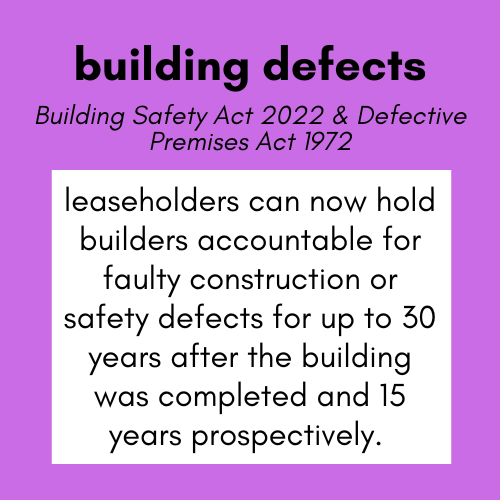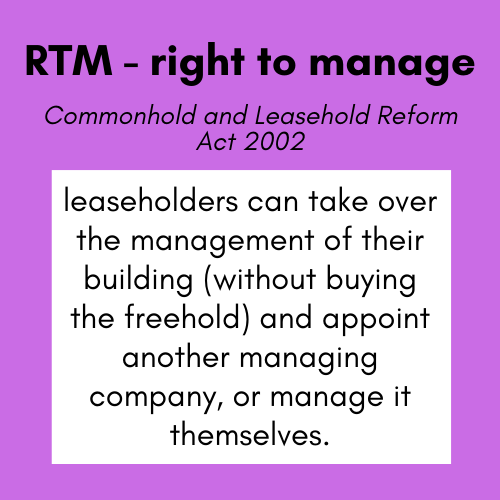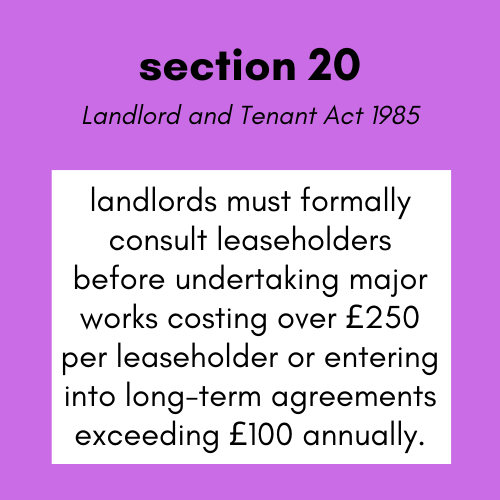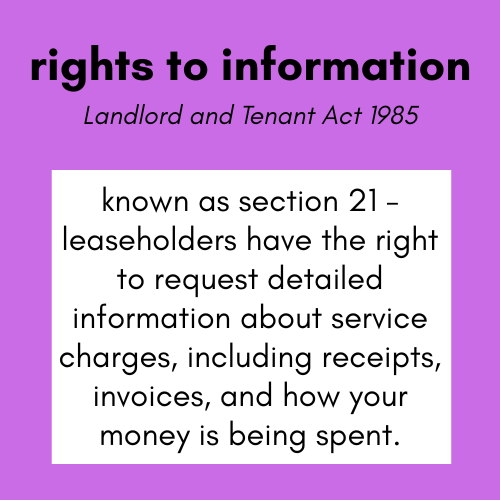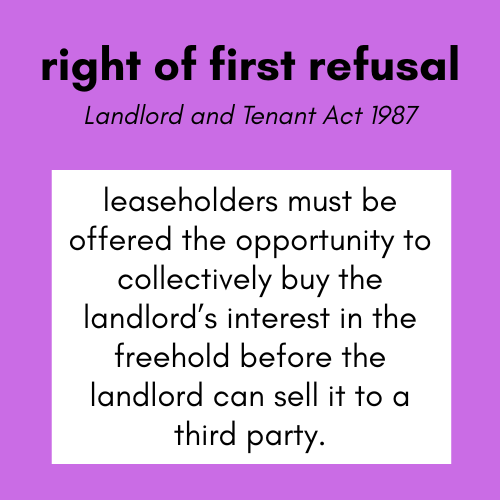acts, sections & glossary…
not everyone is a legal expert, so we’re simplifying the legal jargon giving everyone the ability to understand their rights.
12 acts that protect leaseholders
if you can’t find the answer to what you need, please contact us.
glossary
-
refers to a set of methods that can be used to resolve disputes without going to court. for leaseholders, ADR can be an effective way to resolve disputes with their landlords or property managers without the need for costly and time-consuming legal proceedings. Some common forms of ADR for leaseholders include: mediation; arbitration; adjudication; ombudsman schemes.
-
a form of ADR, whereby a neutral third party (the arbitrator) hears both sides of the dispute and makes a binding decision.
-
-
a breach of a clause in a lease. this could be breaking an obligation or a prohibition that is spelled out in the lease. a classic example is a covenant for a leaseholder to pay a service charge towards exterior maintenance.
-
the collective purchase of the freehold by leaseholders in a building containing flats in accordance with the 1993 Leasehold Reform Housing and Urban Development Act, as amended by the 2002 Commonhold and Leasehold Reform Act.
-
where permission is needed by one party from another to carry out a certain action. an example of this could be a leaseholder requesting consent from the freeholder to carry out alterations to a flat where consent is required under the terms of the lease.
-
a document that supplements an existing lease putting into effect a variation to that lease. an example could be a variation allowing a leaseholder to sublet their property where previously it had been prohibited.
-
a party may apply to a court or a tribunal to avoid serving a notice under a legal procedure. If they succeed, the court or tribunal issues a dispensation from serving that notice.
an example could be a tribunal allowing a group of leaseholders to acquire the right to manage without serving a claim notice on the landlord because the landlord is absent.
another example is a landlord applying to a tribunal to dispense with the need to serve a consultation notice in relation to major works where the works are urgent and the leaseholders will not be significantly prejudiced (eg leaseholders can demonstrate to the tribunal that they would have made observations on estimates had they been properly consulted).
-
(aka property chamber) has the power to deal with certain disputes or issues with leasehold properties, such as service charge, lease extensions and enfranchisement disputes, and RTM applications.
-
forfeiture means the lease can be terminated and the property revert to the freeholder. this could arise if the leaseholder breaches the terms of the lease.
-
a company that owns the freehold, the shares in which are usually owned by the leaseholders. often described as ‘having a share of the freehold’.
Residents’ Management Company (RMC) – a company set up to deliver the services on behalf of the landlord under the terms of the lease. the company is a party to the lease (as landlord) and all leaseholders are usually shareholders.
-
a payment is made by the leaseholder to the freeholder under the terms of a lease.
-
the landlord may grant a lease of the whole building to a party (company or individual) who then grants ‘under leases’ to leaseholders of individual flats. in this scenario, the head lessor becomes the landlord of the individual flats.
-
it is common for the lease to require the whole building or a part of the building to be insured against risks such as fire, lightning, subsidence, and even terrorism. building insurance is usually but not always the responsibility of the landlord although the lease will usually require the leaseholder to pay a share of the cost.
-
the party who grants the lease. there may be layers of landlords. for example, the freeholder (who owns the building forever) may grant a lease of the whole building to a leaseholder who may then grant further subleases of the individual flats.
-
the right to add 90 years to what is left on the existing lease at a ‘peppercorn rent’. the less time is left on the lease the less valuable the property becomes.
-
a leaseholder is someone who owns a property on a lease, typically for 99, 125 or 999 years. The length of the lease decreases year by year until it eventually runs out.
a leaseholder is also called a tenant, but this should not be confused with short-term agreements. at is essential to be familiar with and understand the terms of your lease because this sets out your rights and obligations
-
the calculated value of the difference between what the property is worth in its current state with a lease <80 years, and what the value would be with the new lease.
-
cheaper and quicker than tribunal, to help you and your landlord come to an agreement if you are in dispute about your lease.
-
Item description
-
Right to Manage(RTM) is a group right for qualifying leaseholders of flats to manage their own building in which they live through a special company set up by the leaseholders for that acquisition.
-
a contribution payable by a leaseholder typically to a landlord, for a share of the cost of insuring, maintaining, repairing, cleaning, etc. the building.
-
a prescribed document that must accompany a service charge demand and that sets out a leaseholder’s rights and obligations in respect of service charges generally.
-
a term that can be used to describe both people that own and people who rent their property but which is more often applied to people who rent.

